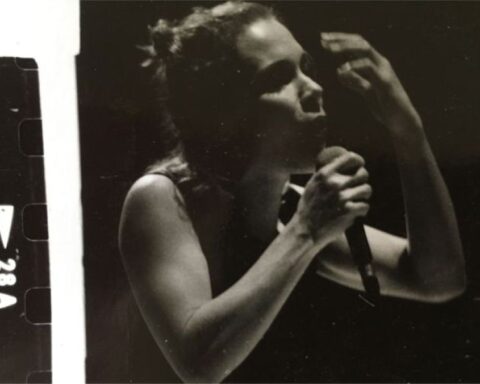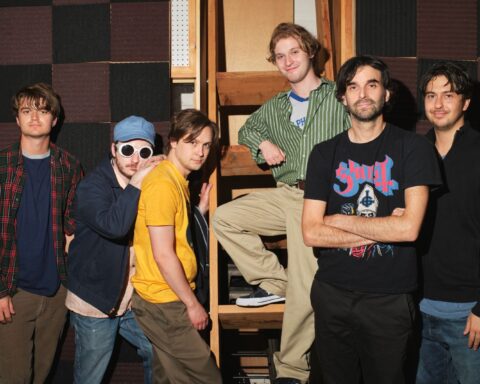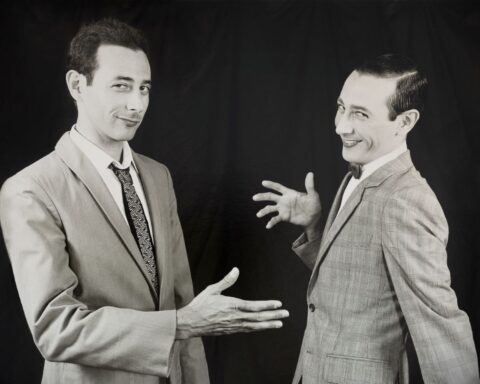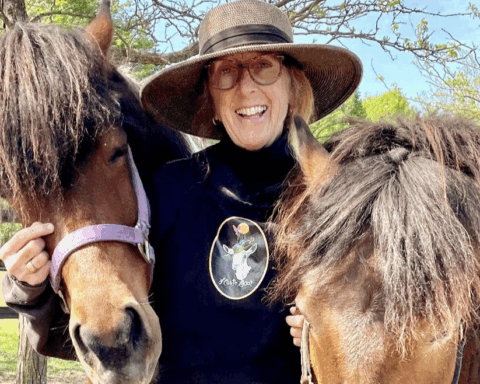France Televisions’ six channels, none of them major, broadcast 7,644 documentaries last season, 351 in prime time. 5,269 hours in all.
According to the Canadian Media Fund (CMF), the number of documentary projects the CMF funded at the production level for two years, 2015-2016 and 2016-2017, was 603. According to the Canadian Media Producers Association, (CMPA), the total number of documentaries, including film and TV, made by Canadian producers in 2015-2016 was 449.
One year, on one part of TV in France: 7,644. One year, in all of Canada: 449.
Over 50 Canadians came to Sunny Side this year. Hard hit by CRTC big-broadcaster favoritism, Can Con reduction from 65 to 35%, and the meagre, ever-shrinking Canadian market, many were motivated by potential connections to European, and Asian buyers.
At Sunny Side, in pitches, sessions and screenings, the array of inventive, audacious, investigative, TV, feature, and series documentaries on view was inspiring. The founder of Sunny Side, Yves Jeanneau, calls his market a “Carrefour de resistance,” (Crossroad of Resistance) and in the psychological sense of respect for documentary and its makers in a dummied-down media world, it is.
I concentrated on History docs, which thanks in large part to the participation of our home-grown researcher and thinker Elizabeth Klinck, was this year’s theme at Sunny Side.
UNDERSTANDING NEW TRENDS
In the History sessions I attended, I was most interested in understanding trends and the evolution of the form. Stephen Hunter’s opening session, “The Future of History,” was an excellent introduction. His thesis was that cable TV killed real history, i.e., “anything with archives.” History was redefined as anything that happened yesterday. Hunter’s question was, “Where is history? Is history making a comeback?” He researched current history programming and interviewed international distributors to assess, “where they are laying their chips. “ His analysis was peppered with illustrative clips.
Trends:
WAR is the undisputed champion of history television and resounds across the globe:
We can’t kill Hitler, the Nazis, or end World War 2. Hitler is even regurgitated in a colourised clip. North Korea is big in Germany.
The East is rising up and featuring their own mass murderers, as seen in a horrific clip from a film on Japan’s war in China. Countries thirst to see their own stories told.
War has even become a fun and games show. Lion TV’s game show, Time Commanders, allows participants to alter history (e.g. Napoleon can win) and ends with a recap of what really happened. Time Commanders increased viewers by 300% in the 10-34 demographic.
ANNIVERSARIES are the second big trend in the history category.
These are large budget, one-off, full-length documentaries, which connect the dots from the past to the present. Often, they are affected by nationalism. For example, the 100the anniversary of the Russian Revolution was featured on European television, but had minimalist play on US, Canadian, or UK television.
The UK was more interested in The Death of Diana and the anniversaries featured in the US were were Vietnam, (e.g. Ken Burns seminal, remarkable 18 hour series, Vietnam), the Moon landing, Woodstock, the Democratic Convention and the 1967 Summer of Love.
GENERAL
“The trends right now are go bigger or go low,” Hunter said.
His research showed lots of money in a few hands. With Ridley Scott, or Leonardo DiCaprio attached, there was big money. If not, budgets were about $90,000US an hour.
“The middle class budget in the $200,000 to 500,000 dollar range is disappearing.” What has reemerged from this situation is the long-form documentary on Netflix, Amazon, Hulu, with films like I Am Not Your Negro, which have a clear connection to today.
As well, shows such as 101 Minutes, “the best documentary on 9/11,” according to Hunter, indicate a direction for future documentary filmmaking. 101 Minutes has zero narration and is made entirely with cell phone captures, local media, home videos and other digital material. Hunter expects more docs like this because mounds of visual archives are created daily, and with this immediate, personalised kind of record, viewers feel they’re getting the real goods.
Clearly, too, different countries have specific narrative leanings.
In France (and increasingly around the world) ARCHIVES ARE KING, as seen in the hugely popular French series Apocalypse, about the two world wars and totalitarianism in the 20th century. Made almost entirely with restored, colourised and declassified archival footage, this series topped the charts and its web versions are widely used educationally.
The UK loves living history. Mutiny, not yet broadcast in North America, pushes the form to the edge. In real time, with live volunteers, it recreates the extreme, life-threatening, 4000-mile struggle of Captain Bligh and his men to stay alive in a lifeboat, adrift after the 1789 mutiny on The Bounty.
Germany and China want ancient History. “Anything without a cell phone.”
And then, our particular North American situation: “In the US, big shows are not History, they’re nostalgia,” Hunter says. The exception is PBS but most US History is within reach of the viewer’s own memories, nothing before 1960.
For producers, it’s hard to project what broadcasters will take. It is especially hard for Canadian producers who have almost nowhere in Canada to sell a real history show, and therefore no way to trigger financing.
“HISTORY IN CANADA IS DUCKS, TRUCKS AND STUPID FUCKS” (anonymous)
Canada’s History Television doesn’t do History. It buys mostly from US and UK sources and the little original programming it does, apes US channels. Sadly, public broadcasters also don’t have much interest in producing Canadian history programming that would define, inform, and strengthen Canadians. CBC’s recent “story of not-us” history fiasco was based on a UK/American model and story-edited largely by Brits. The very occasional real history sop is a miracle.
Canadians are faced with a history programming black hole. The Canadian co-producer of the hugely successful French series, Apocalypse could not find a buyer in Canada, except for TV V, a French government-funded world network, which has a small channel in Quebec, and on provincial broadcasters TVO and Knowledge in English Canada. Still, the show got extremely high ratings.
As a Canadian distributor understatedly said, “The Europeans are interested in History, Canadians not so much.”
THE GOOD NEWS
The Sunny Side History pitch session was like seeing the Promised Land. Amazing history documentaries are still being made, or at least developed. Sadly, but understandably, not one Canadian history documentary was chosen, or even submitted for the History pitch at Sunny Side.
The winning pitch, The Rise and Fall of Bhutto, is about the first democratically elected leader of Pakistan, jailed and executed by an America-backed military dictator. Characterized by the MC UK Producer John Farren as “one of the best sizzles I’ve ever seen,” the pitch captivated the audience with its Shakespearean evocation of a great, flawed, tragic figure, and its concomitant context for current events in South East Asia. Then came the reality check of broadcaster feedback.
The Smithsonian commissioning editor said it is a challenge to get a US audience to watch international shows and he couldn’t sell it to an American audience. PBS said, yes. Australia (public television] would buy the show as an acquisition, but couldn’t be involved.
BBC, for whom the film’s director, Zafar Ziad had worked, said it was “still in the process of defining what strand” would fit for the film.
Norway, with a significant Pakistani population since 1970, did not commit to either acquisition or a pre-buy of the doc.
To up the ante, director Ziad mentioned the 70-year anniversary of partition of India and Pakistan, American involvement in Bhutto’s murder and that a tape of a conversation between Bhutto and Nixon would be included in the doc.
A QUESTION OF FORM
Stephen Hunter and other history producers feel that few broadcasters, unlike Amazon and other OTT’s [Over The Tops], are willing to take chances with form. As examples, Hunter cited fracturing narrative, out-of-sequence clips, animated photographs, alternative POV’s, and dramatisations. Elizabeth Klinck mentioned serializsed documentaries such as O.J: Made in America, which used cliffhangers to retain audience. Klinck was particularly intrigued by Our 100 Days, an initiative of Field of Vision producers Charlotte Cook and Laura Poitras, who gave 10 diverse filmmakers small budgets and production help to shoot short, personal films on the effect of Trump’s first days in the Presidential office. Edited material went on the visual journalism site and their shows were also versioned.
“Part of the problem of documentary form,” says Stephen Hunter, “ is that factual TV has to catch up with scripted TV. Drama binge watchers, for example, sometimes don’t know what’s going on until well into the programme and viewers go along with it. Broadcasters are reactionary. Producers have to push it.”
AU REVOIR
I wonder, now when we need it most, where Canadians can find the voice and force of John Grierson, the advocate of “propaganda” in the educational sense of the word. Now, when truth and facts are under siege and too much of the world is media- blinkered, we vitally need good documentary. And we Canadians are documentary pros. Give Canadian documentarians sufficient government funding, TV slots equivalent to those on offer in Europe, more courageous and less risk-averse broadcasters, and Canada will shine in global markets.
Unfortunately, now, not so much.
POST SCRIPT PICKINGS
CRITICAL PAST
This archival organisation offers one of the world’s largest completely digitised and searchable archival footage sources. It’s a way to get into the US Federal government holdings. It has 57,000 archival clips and 7 million historic stills. The free screeners are full rez, automated, available, 24 hours a day; the licensing is world-wide, perpetual, royalty-free and licensed by clip so there may be multiple shots in one clip. Not overly expensive. It can be accessed here.
ONE OF MANY SESSIONS
INA, the largest archive in France, housing all the digitised national archives, hosted a session exploring the creative use of its resources. INALAB, featured eight winners, who had free INA access for the production of a short documentary. One of the docs was about women writers. It combined animation and archives, moving from a writer’s animated face with voice-over of childhood memories, through an animated window, into archival sequences evoking that world.
ONE DISTRIBUTOR
Xiaojuan Zhou , Canadian distributor for Attraction, says, “I come to Sunny Side because we make shows that sold in France and we want to sell in the rest of Europe and Asia. Our in-house producers produce a large number of low-budget series in French or medium-or-high end English docs, so we think we can exploit both worlds effectively.’’
A PANEL – Delving Into Truth Through Archives
History producers often use rare archival footage from sources that could be considered “propaganda.” They search for “truth” and defend the importance of memory, using unusual sources to uncover the compelling footage of “5 minutes before or after.” International history producers Andre Singer, Michael Kloft, and Tom Jennings, moderated by Elizabeth Klinck, discussed the careful, rewarding scouring of propaganda archives, and the gems they found.








